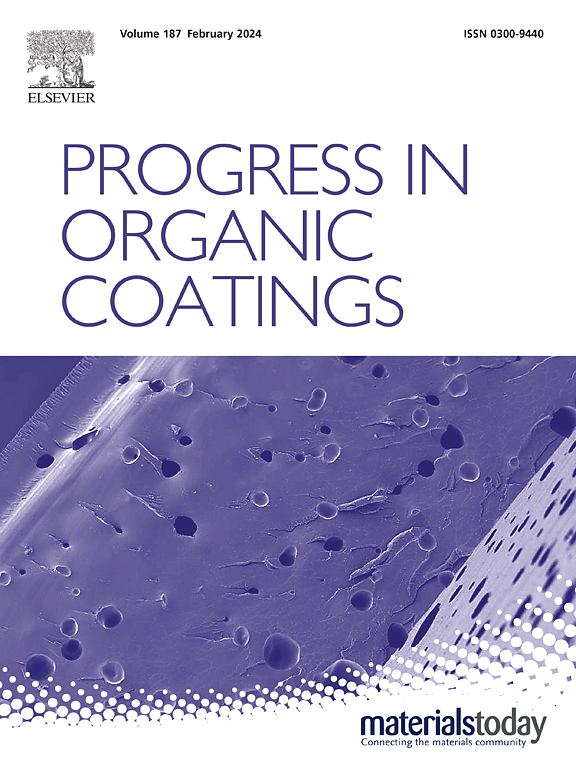Femtosecond laser patterning for enhanced hydrophobicity of modified nanocellulose coatings
IF 6.5
2区 材料科学
Q1 CHEMISTRY, APPLIED
引用次数: 0
Abstract
The hydrophobic properties of spray-coated nanocellulose coatings containing modified cellulose microfibrils (mCMFs) or cellulose nanofibrils (mCNFs) that are hydrophobized by deposition of organic nanoparticles with encapsulated wax, can interestingly be improved after surface patterning using ultra-short (femtosecond) pulsed laser processing. In this study, it is demonstrated how the parameters for laser patterning are tuned to create reproducible biaxial grid patterns with optimized resolution and increased hydrophobicity under different power settings (36 to 40 %), repetition rates (250, 500 kHz), hatch pitch sizes (20 to 50 μm) and number of processing layers. A relatively small laser processing window (39 % laser power, 500 kHz rate) was identified resulting in an increase in sessile water contact angles from 118° to 158° (mCMF coatings) or 98° to 122° (mCNF coatings), corresponding with contact angle hysteresis of 28° (mCMF coatings) or 23° (mCNF coatings). For different pattern geometries, experimental water contact angles could be predicted from trends following the theoretical Cassie-Baxter equation. Moreover, the structural changes in hydrophobic nanocellulose coatings after laser processing were demonstrated through spectroscopic analysis, indicating the enhanced hydrogen bonding and progressive development of more ordered cellulose structures under moderate or optimized power settings. In future, the femtosecond laser patterning can be applied as industrially scalable technology to tune hydrophobic properties and performance of nanocellulose coatings by selecting given pattern geometries and processing conditions.
求助全文
约1分钟内获得全文
求助全文
来源期刊

Progress in Organic Coatings
工程技术-材料科学:膜
CiteScore
11.40
自引率
15.20%
发文量
577
审稿时长
48 days
期刊介绍:
The aim of this international journal is to analyse and publicise the progress and current state of knowledge in the field of organic coatings and related materials. The Editors and the Editorial Board members will solicit both review and research papers from academic and industrial scientists who are actively engaged in research and development or, in the case of review papers, have extensive experience in the subject to be reviewed. Unsolicited manuscripts will be accepted if they meet the journal''s requirements. The journal publishes papers dealing with such subjects as:
• Chemical, physical and technological properties of organic coatings and related materials
• Problems and methods of preparation, manufacture and application of these materials
• Performance, testing and analysis.
 求助内容:
求助内容: 应助结果提醒方式:
应助结果提醒方式:


